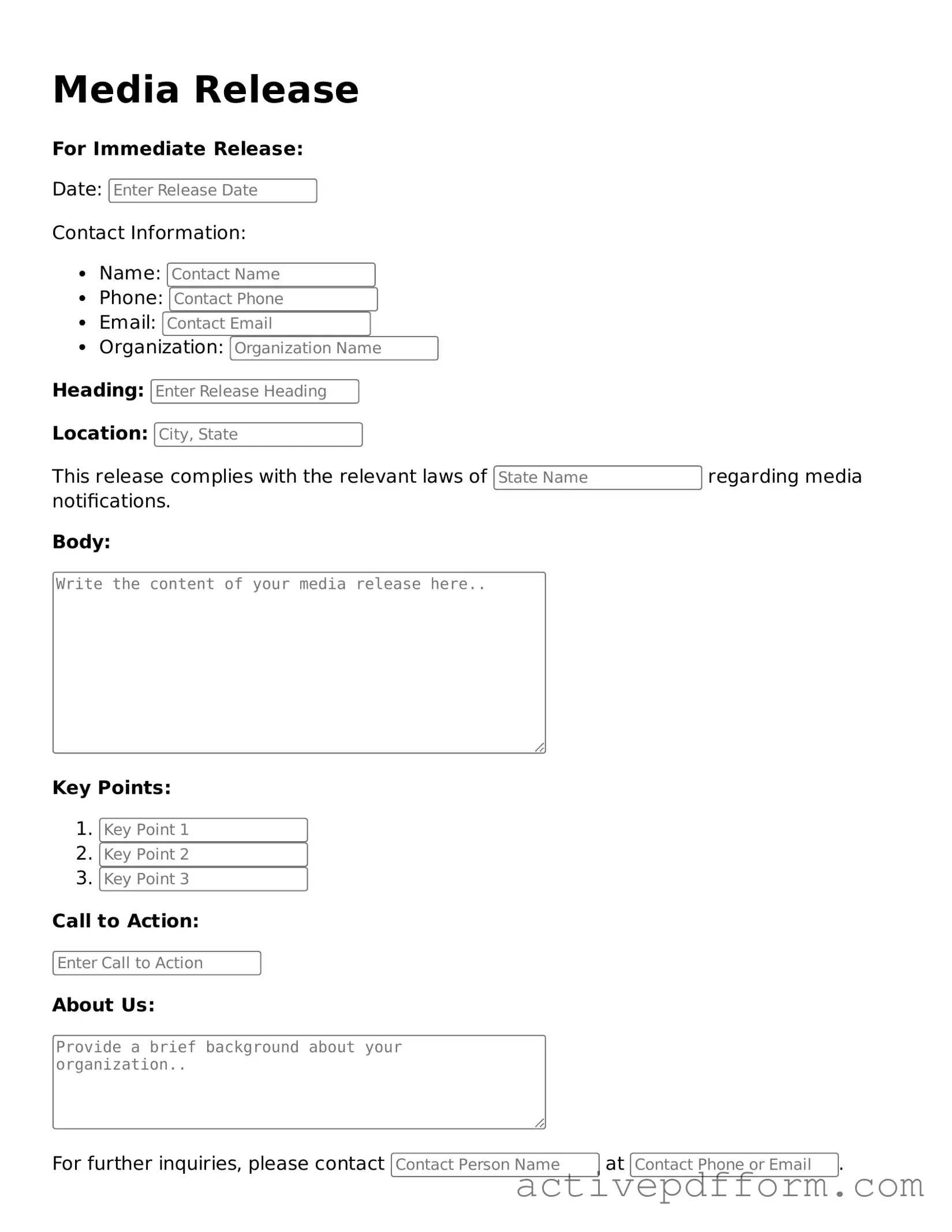What is a Media Release form?
A Media Release form is a legal document that grants permission for an individual or organization to use a person's image, voice, or other likeness in various media formats. This can include photographs, videos, or audio recordings. By signing the form, the individual consents to the use of their likeness for promotional, educational, or informational purposes.
Why is a Media Release form important?
This form is crucial for protecting both the individual and the organization. It ensures that the individual's rights are respected and that the organization has the legal authority to use the individual's likeness. Without a signed release, organizations may face legal challenges if they use someone's image without permission.
Who should sign a Media Release form?
Typically, any individual whose likeness will be used in media should sign the form. This includes participants in events, interviews, or any other situations where their image or voice may be recorded. If the individual is a minor, a parent or guardian must sign on their behalf.
What types of media can be covered by a Media Release form?
The Media Release form can cover a wide range of media, including but not limited to photographs, videos, social media posts, brochures, and websites. It is important to specify the types of media in the form to clarify how the likeness will be used.
Is there a specific format for a Media Release form?
While there is no universally mandated format, a Media Release form should clearly outline the terms of use, the scope of the release, and any compensation or benefits involved. It should also include spaces for signatures and dates. Customizing the form to fit the specific needs of the situation is often advisable.
Can a Media Release be revoked after it is signed?
Generally, once a Media Release is signed, it cannot be revoked unless otherwise specified in the document. However, it is important to read the terms carefully. Some forms may include clauses that allow for revocation under certain conditions.
What happens if someone refuses to sign a Media Release form?
If an individual refuses to sign the form, the organization must respect their decision. In such cases, the organization should refrain from using the individual's likeness to avoid potential legal issues. Alternatives, such as using stock images or finding other participants who are willing to sign, may be necessary.
Are there any age restrictions for signing a Media Release form?
Individuals must be at least 18 years old to sign a Media Release form independently. Minors require a parent or guardian's signature to provide consent. This ensures that the rights of minors are protected while allowing their participation in media-related activities.
What should be done with the signed Media Release form?
Once signed, the Media Release form should be stored securely. Both the individual and the organization should retain copies for their records. This documentation serves as proof of consent and can be vital in case any disputes arise regarding the use of the likeness.
Can a Media Release form be used for commercial purposes?
Yes, a Media Release form can be used for commercial purposes, provided that this is clearly stated in the document. If the organization intends to use the likeness for advertising or marketing, it is essential to specify this in the release to ensure that all parties understand the intended use.
